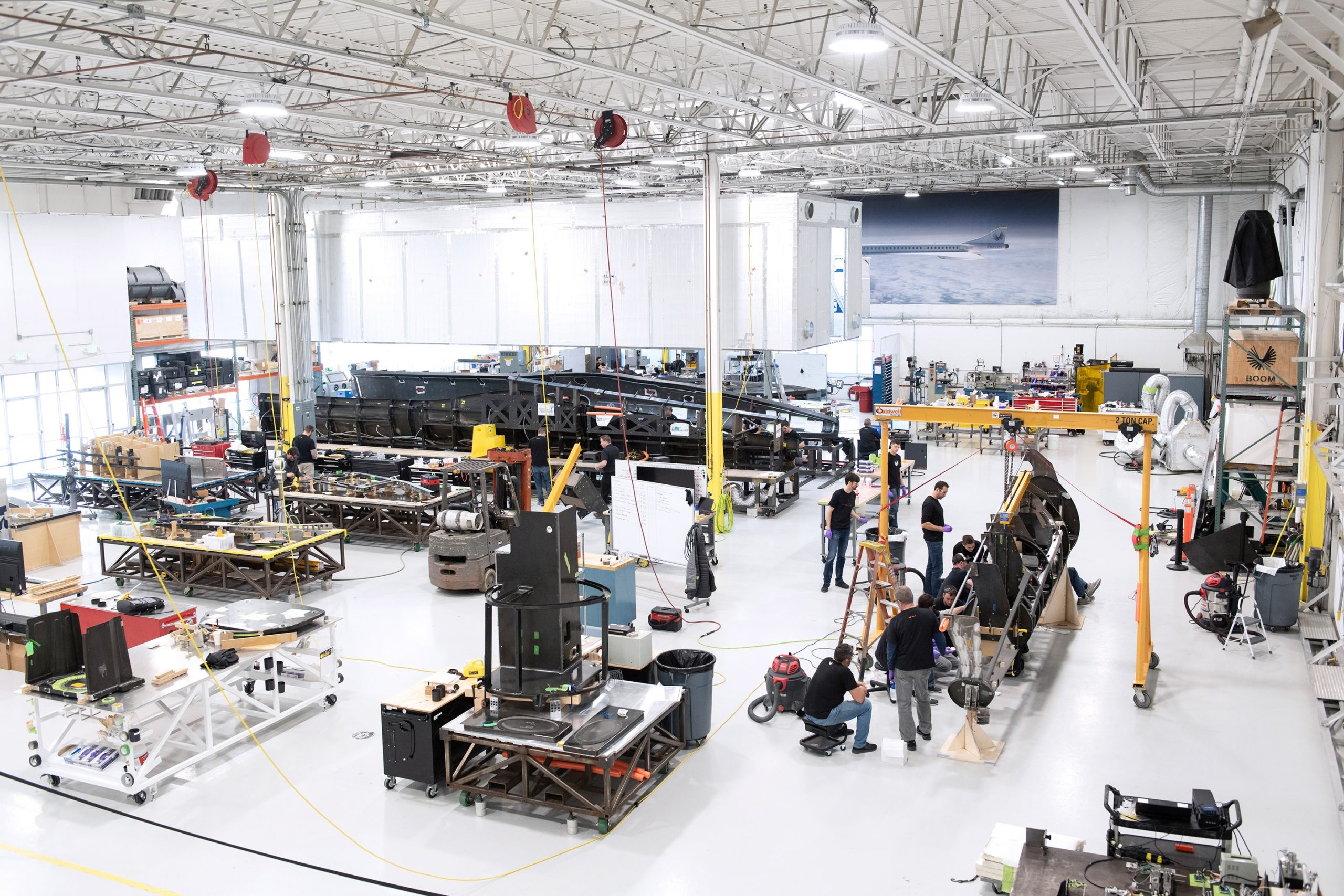Stay Up to Date
Submit your email address to receive the latest industry and Aerospace America news.
Here's how one company, Boom Supersonic, plans to do it
Aerospace companies in the U.S. are finding creative ways to move forward with their projects during the coronavirus pandemic, but they are doing so mindful that the situation is a dynamic one.
In a Colorado hangar, engineers and technicians at Boom Supersonic continue to assemble their two-seat XB-1 demonstrator aircraft, but it is far from business as usual.
“If somebody is essential and required for the build of XB-1, right now they are coming into the office,” said Jeff Mabry, the company’s chief test engineer. “If you’re not hands on with the aircraft, you’re working from home.”
If Americans take these social distancing precautions now, “hopefully in the next few weeks and months things will get better,” said Mabry. “We’re all in the same boat right now,” he added. “We’re just going to have to play it by ear and see how this goes.”
The company began limiting visitor access to its Centennial hangar last month, and since then has “progressively escalated our policy to what we think is the best thing for our company to keep XB-1 on track,” Mabry said.
The majority of Boom’s 150 employees are now teleworking, including Mabry. As of Wednesday, there were 183 confirmed cases of the COVID-19 virus in Colorado, according to the state’s health department. Boom has not had any cases among its employees.
For those engineers building out XB-1, the company is staggering the “different groups of people having to come into the office,” Mabry said, so as to not have too many people in the hangar at once. He said this hasn’t slowed down assembly, adding that “we have made significant progress just in the past week.”
Boom is also tracking XB-1’s status on its website with an interactive model of the aircraft. Earlier this month, engineers bonded the fuselage with the systems bay that houses the flight controls, avionics and hydraulics. Mabry says the aircraft is on track to be rolled out this year.
Then XB-1 will be trucked to the Flight Research Institute in Mojave, California, for a year of ground tests. In 2021, Boom test pilots will steadily increase the speed to Mach 2.2. Boom is counting on the XB-1 to answer technical questions about the materials and design for its planned Overture supersonic passenger jets that would start flying commercially in the mid-2020s.
Boom is not alone in carrying on. SpaceX launched a Falcon 9 rocket from NASA’s Kennedy Space Center on Wednesday, sending another 60 satellites for its Starlink broadband constellation into low-Earth orbit. The company had previously planned on twice-monthly launches for Starlink, but the company has not said whether it expects the coronavirus to impact that schedule.
Starlink competitor OneWeb said it too will move forward with a satellite launch for its LEO constellation. The Virginia telecommunications firm has 34 satellites scheduled to blast into space atop a Soyuz rocket from Kazakhstan at 1 p.m. Eastern time on Saturday. The launch will be livestreamed on Facebook.
About cat hofacker
Cat helps guide our coverage and keeps production of the print magazine on schedule. She became associate editor in 2021 after two years as our staff reporter. Cat joined us in 2019 after covering the 2018 congressional midterm elections as an intern for USA Today.
Related Posts
Stay Up to Date
Submit your email address to receive the latest industry and Aerospace America news.





